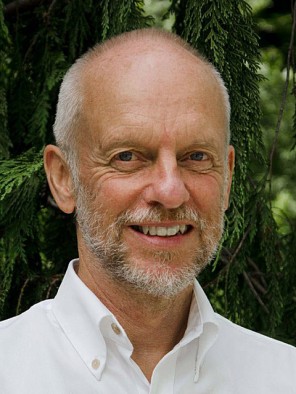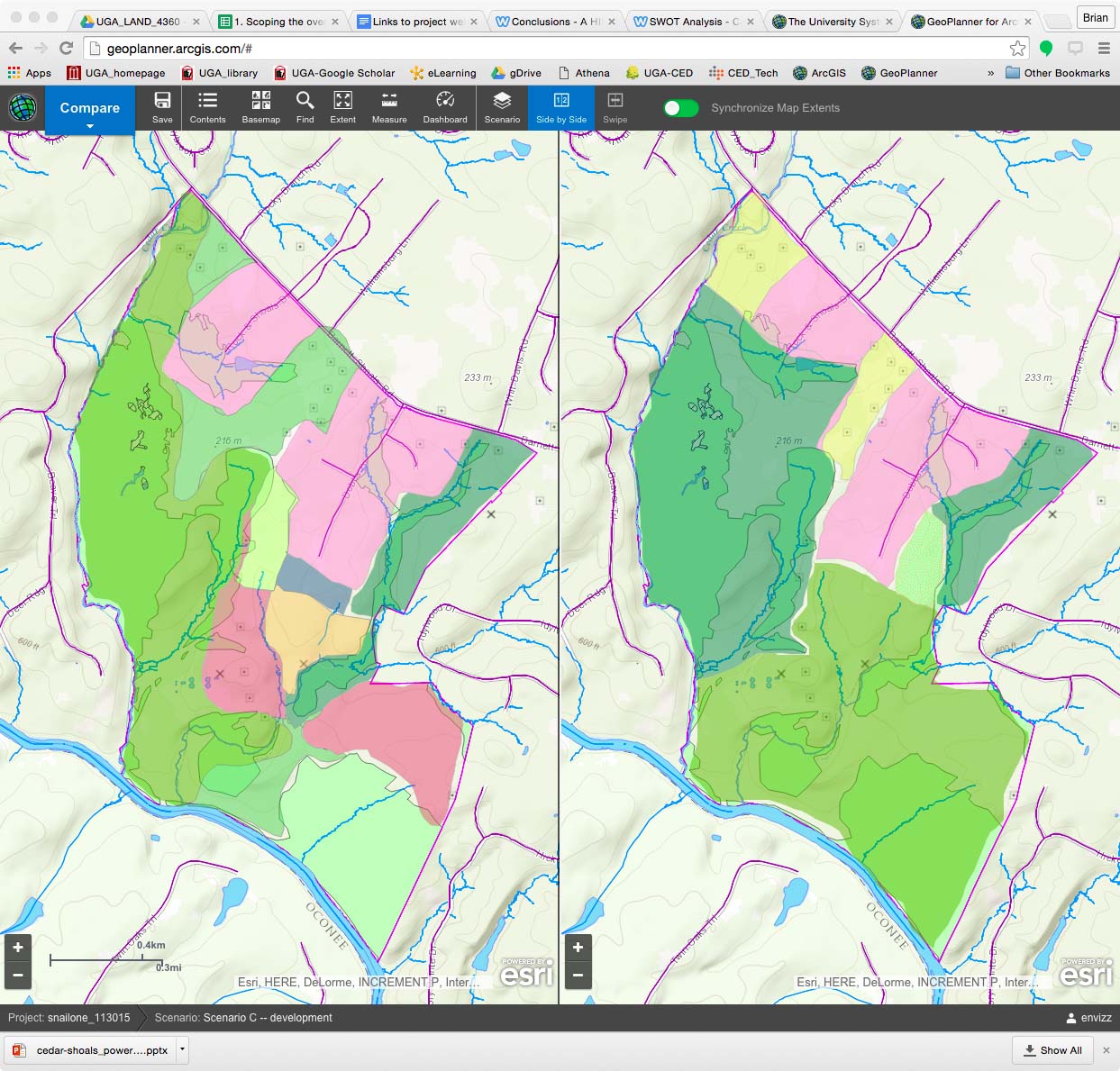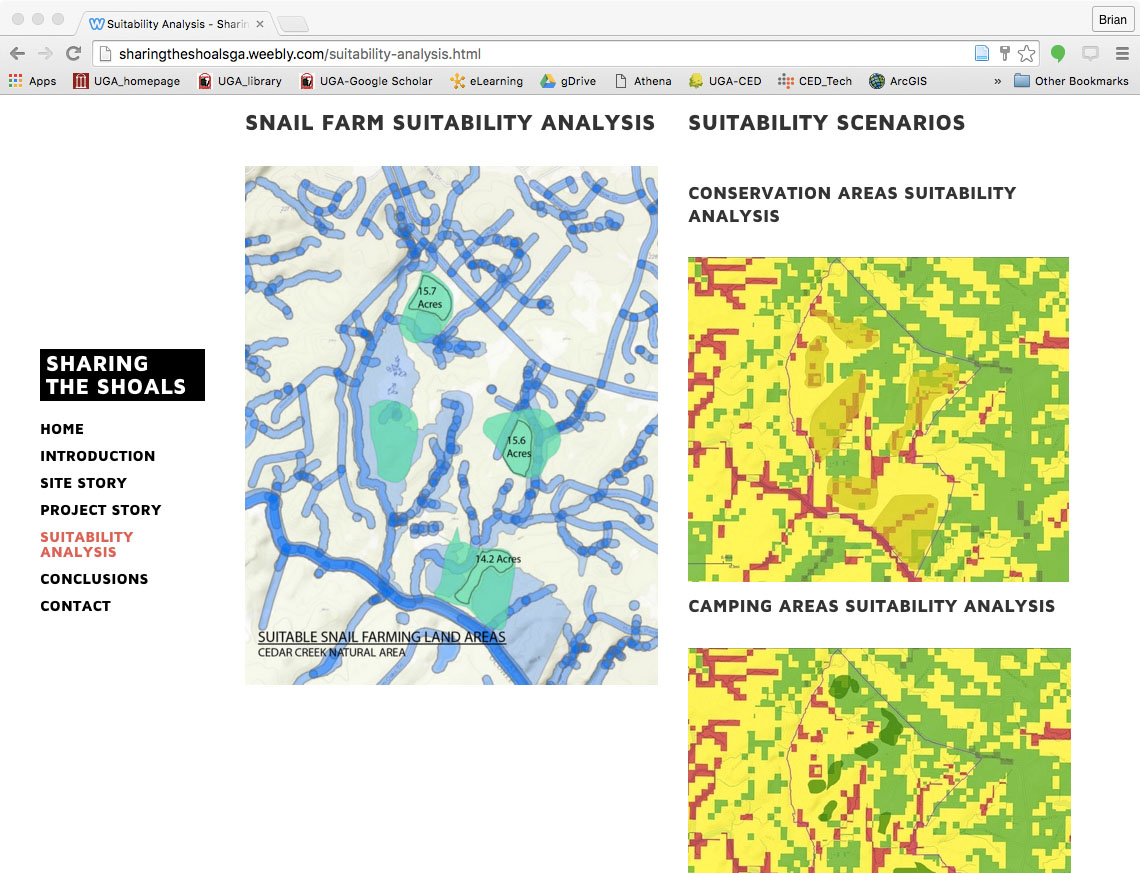Brian Orland
Job Title: Rado Family Foundation/UGAF Professor of Geodesign
Curriculum VitaeContact
Email: borland@uga.eduPhone: 706-542-0709
Street address: 141 Jackson Street Building; 285 S. Jackson Street
Athens, Georgia 30602

Personal Interests
His teaching and research focus on environmental perception, the modeling and representation of environmental impacts and the design of information systems for community-based design and planning. Most of his recent work has related to land use change, water resources and energy development in Pennsylvania and the UK. Current work includes the use of serious games, visualization and mobile devices for data collection and information dissemination in the context of landscape design and planning issues, especially in coastal Georgia.Professional Registration
Architects Registration Council of the United Kingdom, Reg # 044383B. June 1977-present.

Brian Orland
Biographical Information
Brian holds degrees in Architecture and Landscape Architecture. His teaching and research focus on environmental perception, the understanding and representation of environmental impacts and the design of information systems for community-based design and planning. He did pioneering work in computer visualization for design and planning research including virtual and augmented environments for testing interventions in the environment. Recent work includes the use of serious games, visualization and mobile devices for data collection, information dissemination and citizen engagement in landscape design and planning. Orland has served on several large multi-investigator initiatives: a Dept of Energy Innovation Hub ($129m), NSF-EASE ($2.5m), NSF Urban Systems ($500k), 2 EPA-STAR ($2.2m, $832k), NFWF ($1.5m), and on 60+ smaller interdisciplinary grants, and has directed multi-disciplinary labs at UIUC (Imaging Systems Lab.) and PennState (StudioLab) Current interests include GA coastal residents' intentions to migrate in the face of climate-related change (NSF-RAPID); the roles of cultural information in regional planning (NPS); and an 80+ university global collaboration "Changing our Global Infrastructure" with ESRI and Geodesignhub.Portfolio
- /portfolio/snail-farming-in-georgia
- /news_and_events/brian_orland_manages_global_geodesign_collaboration



Education
BA (Hons) Architecture, University of Manchester. June 1974BArch, University of Manchester. June 1976
MLA, University of Arizona. August 1982
SELECTED PUBLICATIONS
2018, Orland, B., M. Taylor, T. Mazurczyk, M. Welch-Devine, L. Goldberg, T. Murtha. Virtual Reality and the Scenic Drive. J. of Digital Landscape Architecture. https://gispoint.de/fileadmin/user_upload/paper_gis_open/DLA_2018/537642015.pdf
2018, Orland, B., M. Thomas, T. Mazurczyk, M. Welch-Devine, L.Goldberg, T. Murtha. Identifying valued scenes and settings in an ordinary landscape. Visual Resource Stewardship.USDA Forest Service General Technical Report. North Central Forest Experiment Station. (in press)
2018, Mazurczyk, T., Murtha, T., Goldberg, L., & Orland, B. Integrating Visual and Cultural Resource Evaluation and Impact Assessment for Landscape Conservation Design and Planning. In Visual Resource Stewardship.USDA Forest Service General Technical Report. North Central Forest Experiment Station. (in press).
2018, Goldberg, L., Murtha, T., & Orland, B. A. (2017). The use of crowdsourced and georeferenced photography to aid in visual resource planning and conservation. In Visual Resource Stewardship. USDA Forest Service General Technical Report. North Central Forest Experiment Station. (in press).
2016, Orland, B. Geodesign to Tame Wicked Problems. J. of Digital Landscape Architecture. (1) 187-197. https://gispoint.de/fileadmin/user_upload/paper_gis_open/DLA_2016/537612022.pdf
2015, Orland, B., T. Murtha. Show me: Engaging citizens in planning for shale gas development. Environmental Practice. (17) 4, 245-255. http://dx.doi.org/10.1017/S1466046615000290.
2015, Orland, B. Persuasive new worlds: Virtual technologies and community decision-making, Landscape and Urban Planning, (142) 132-135. http://dx.doi.org/10.1016/j.landurbplan.2015.08.010.
2015, Orland, B. The Path to Geodesign: The Family Car of Digital Landscape Architecture? In proceedings: Digital Landscape Architecture. Dessau, Germany.
2014, Orland, B., N. Ram, D. H. Lang, K.W. Houser, M. Coccia & N. Kling. Saving Energy in an Office Environment: A Serious Game Intervention. Energy and Buildings. 74:43-52. See also: http://youtu.be/6B_ID9qhAvg.
2008, Orland, B., Information for design: Interacting environmental systems in space and time. Specialist Meeting—Spatial Concepts in GIS and Design. National Center for Geographic Information and Analysis, UC-Santa Barbara. http://ncgia.ucsb.edu/projects/scdg/docs/position/Orland-position-paper.pdf
2007, Orland, B. & Ursavas, C. Visualizing forest bio-physical characteristics in the context of studies of perceived fire hazard. In, S. McCaffrey (ed.) The Public and Wildland Fire Management: Social Science Findings for Managers. Gen. Tech. Rep. NRS-1. U.S. Department of Agriculture, Forest Service, Northern Research Station. 187-196.
2005, Orland, B. “Calibrating” images to more accurately represent future landscape conditions in forestry. Chapter 6 In: I. Bishop and E. Lange, (eds.) Visualization in Landscape and Environmental Planning. London: Taylor and Francis. 104-111.
2001, Orland, B., Budthimedhee, K. & Uusitalo, J. Considering Virtual Worlds as Representations of Landscape Realities. Landscape and Urban Planning. 54, 139-148.
ORGANIZATIONS
American Society of Landscape Architects
HONORS AND AWARDS
2018, Landscape Architecture Foundation Case Study Investigation (CSI) Research Fellow
2015, Professor Arnold Weddle Chair in Landscape, University of Sheffield
2013, Fellow, Council of Educators in Landscape Architecture
2012, Distinguished Professor of Landscape Architecture, Pennsylvania State University
2012, Outstanding Administrator, Council of Educators in Landscape Architecture
2011, Undergraduate Program Leadership award, Pennsylvania State University
2011-12, Faculty Fellow, Pennsylvania State University Social Science Research Institute
2010, Named in “Most Admired Educators of 2010” Design Intelligence
2009, Honorary Scientist, Rural Development Administration, The Republic of Korea
2002, Award of Merit, American Society of Landscape Architects. Taj Mahal Cultural Heritage District Development Plan (with V. Bellafiore, T. Harkness, A. Sinha, K. McCown)
1999-2000, Faculty Fellow, National Center for Supercomputing Applications
1999, Fellow, American Society of Landscape Architects